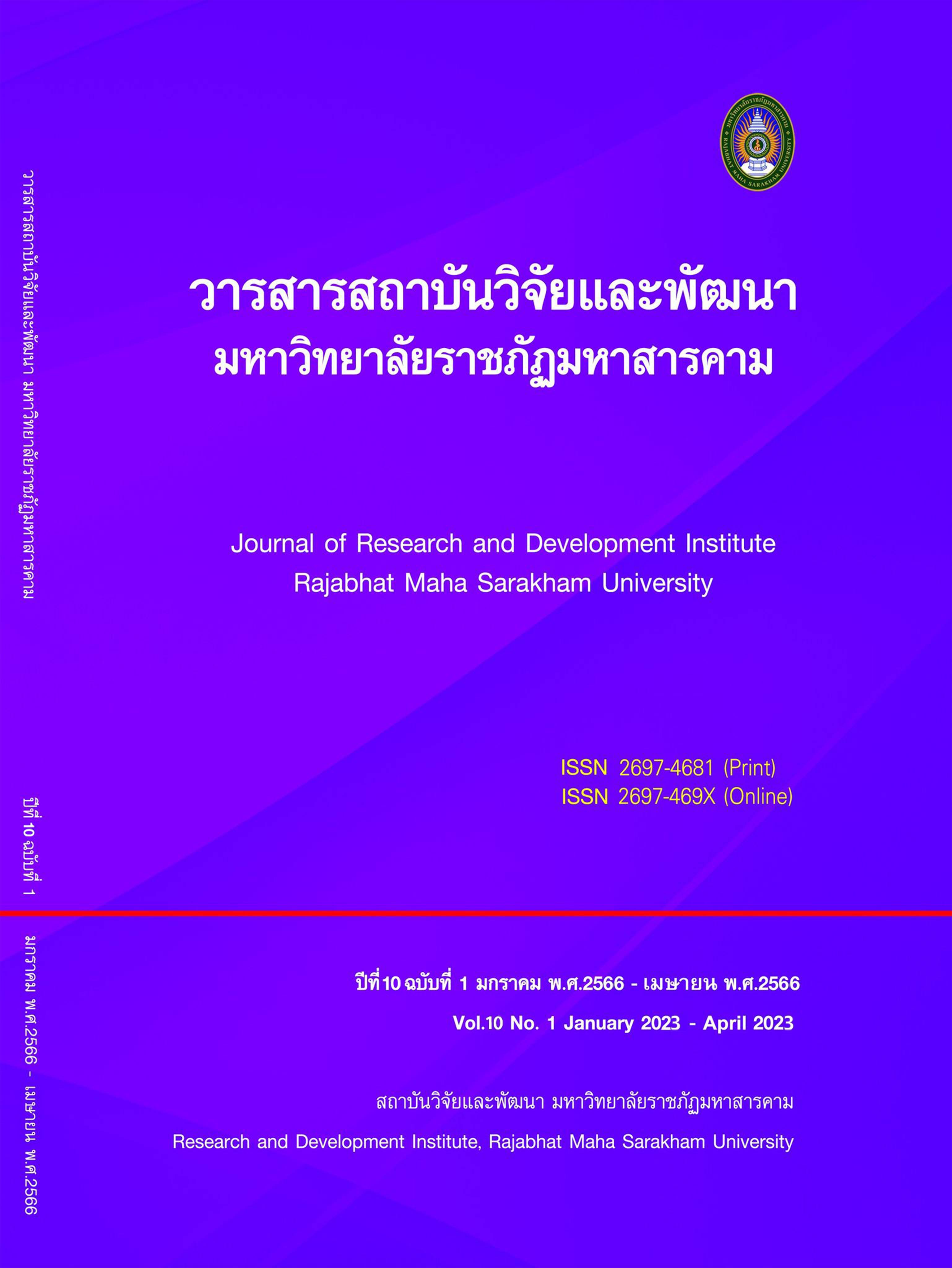The Effect of Ankle Balance Taping with Elastic Tape on Dynamic Balance and Round Kick Performance in Youth’s Taekwondo Athletes
Keywords:
เทปแบบยืดหยุ่น, ข้อเท้า, การเตะเฉียง, การทรงตัวขณะเคลื่อนที่, เทควันโดAbstract
The purpose of this study was to examine the effect of ankle taping with elastic tape on dynamics balance and round kick performance in youth’s taekwondo players. Eighteen blackbelt youth’s taekwondo players from taekwondo club Pattani province, volunteered to participated in this study. They were volunteer age between 12 -15 years old, there were healthy and not ankle injury. The participants were divided into elastic tape as experiment group and no -tape as control group 9 people in each group. After that participants in both groups underwent dynamic balance using star excursion balance test and round kick performance on round kick performance and high round kick then moved participant to rest room, after this randomized to treat and test, when completed on both group research assistant was record data. Researcher used Man – Whitney U test to compare between group with elastic tape and no tape on dynamic balance and round kick performance. The result revealed that on round kick performance, ankle taping group was significant improvement than non - taping group in round kick repeat and high round kick on post intervention (p<0.05). In addition, there were a significant difference in post intervention between taping group and non-taping group on 7 directions consist of anterior, anteromedial, medial, posteromedial, posterior, posterolateral, lateral was significantly different. Whereas, there was not significant difference in anterolateral direction. In this preliminary study, the findings could be concluded an elastic tape was apply on ankle that demonstrated immediate effect preservation on postural control, while round kick repeated and height round kick.
References
Asghar Akbari, Alireza Sarmadi, Parisa Zafardanesh. (2014). “The effect of ankle taping and balance exercises on postural stability indices in healthy women”. Journal of Physical Therapy Science. 26 (5):763-769.
Butler RJ, Southers C, Paul PG, Kyle BK, Phillip JP. (2012). “Differences in soccer players’ dynamic balance across levels of competition”. Journal Athletic Training. 47(6): 616-620.
Chang HY, Chou KY, Lin JJ, Lin CF, Wang CH. (2010). “Immediate effect of forearm Kinesio taping on maximal grip strength and force sense in healthy collegiate athletes”. Phys Ther Sport. 11(4): 122–127.
Estevan I, Falco C. (2013). “Mechanical analysis of the roundhouse kick according to
height and distance in taekwondo”. Biol Sport. 30(4):275-279
Ferrari FJ CM, De Ru E, Abdi E, Boyer FC, Trenchard H,Taiar R. (2015). “Does kinesio-taping influence dynamic standing Balance”. IJSMR,2:1-10.
Fong SSM, Cheung CKY, et al. (2012). “Sport-specific balance ability in Taekwondo practitioners”. J Hum Sport Exercise. 7: 520-526.
Hrysomallis C.(2011). “Balance ability and athletic performance”. Sport Med.41: 221-232.
Jay H, Rebecca AB, Sheri AH, Lauren COK. (2006). “Simplifying the Star Excursion Balance Test: Analyses of Subjects with and without Chronic Ankle Instability”. Journal of Orthopedic & Sports Physical Therapy. 36(3) :131-137
Kazemi M, Perri G, Soave D. (2010). “A profile of 2008 Olympic Taekwondo competitors”. The Journal of the Canadian Chiropractic Association. 54(4): 243–249.
Kim BJ, Lee JH, Kim CT, Lee SM. (2015). “Effects of ankle balance taping with kinesiology tape for a patient with chronic ankle instability”. Journal of Physical Therapy Science, 27(7): 2405-2406.
Kocahan T, Balcı A, Akınoğlu B. (2020). “An Investigation of Acute Effect of Kinesio Taping on Single Leg Balance in Taekwondo Athletes: A Randomized Controlled Trial”. Turk J Physiother Rehabil. 31(1): 29-35.
Moreira PV, Goethel MF, Goncalves M. (2016). “Neuromuscular performance of Bandal Chagui: Comparison of sub elite and elite taekwondo athletes”. Journal of Electromyography and Kinesiology.30(10):55-65.
Murray H, Husk L.(2001). “Effect of kinesio taping on proprioception in the ankle”. J Orthop Sports Phys Ther. 31(1):A–37.
Myers TW. (2009). Anatomy trains: Myofascial meridians for manual and movement therapists. 2nd ed. Edinburgh: Churchill Livingstone.
Noh Zulfikri, Justine Maria.(2017). “Effects of Kinesio Taping on Dynamic Balance Following Fatigue: a Randomized Controlled Trial”. DOI: 10.1298/ptr.E9887
Nunes, G. S., de Noronha, M., Cunha, H. S., Ruschel, C., & Borges, N. G., Jr. (2013). “Effect of kinesio taping on jumping and balance in athletes: A crossover randomized controlled trial”. Journal of Strength and Conditioning Research/National Strength & Conditioning Association. 27(11): 3183-3189.
Pablo Valdes-Badilla, Mauricio Barramuno Medina, et.al.(2018). “Differences in the electromyography activity of a roundhouse kick between novice and advanced taekwondo athletes”. Journal of Martial Arts Anthropology. 18(1): 31–38.
Purves D, Augustine GJ, Fitzpatrick D, et al. (2004). Neuroscience. 3nd edition. Sinauer Associates: Sunderland (MA) U.S.A.
Wilson, V., Douris, P., Fukuroku, T., Kuzniewski, M., Dias, J., & Figueiredo, P. (2016). “The immediate and long-term effects of kinesiotape(R) on balance and functional performance”. International Journal of Sports Physical Therapy. 11(2): 247-253.
Downloads
Published
How to Cite
Issue
Section
License
Copyright (c) 2023 ภิญโญ โชติรัตน์, วิชัย อึงพินิจพงศ์

This work is licensed under a Creative Commons Attribution-NonCommercial-NoDerivatives 4.0 International License.
Articles that are published are copyrighted by the authors of the articles







